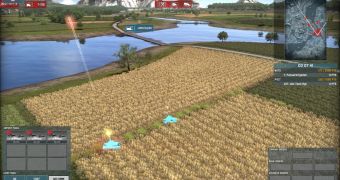One of the worst moments in Wargame AirLand Battle (and I had plenty this past week) is the one when I watch a little fuel symbol pop up somewhere in the distance, right where my armored thrust is supposed to be driving into an enemy-controlled territory to destroy some vulnerable units.
When first playing the new title from Eugen Systems, I paid a lot of attention to unit characteristics like weapon penetration, armor thickness or accuracy.
As I played more, I found that my eyes drifted more towards other elements, less impressive on the surface, like autonomy and speed.
This happened because Wargame AirLand Battle introduces a simple but very powerful supply system to the military simulation frame that guarantees that battles are won and lost based on how well a player can anticipate the needs of his armies and then fulfill them.
I was often tempted to deploy large groups of Challengers or T80s, arguably the best armor in the game, only to find that I was unable to fuel their advances and was forced to rely on lesser troops to try and inflict losses on enemy forces.
While using the British deck, I often found that the supply helicopters were my most important resources, worthy of more air-based protection than any other unit on the battlefield.
Both human opponents and the computer understand the importance of supply runs and often target trucks that drive along roads with little or no protection.
Wargame AirLand Battle is a game that tests the attention of even the most capable strategy fan and I often forget about supply until the moment when tanks go out of fuel or antitank vehicles finish their rocket reserves.
Defeat is a great teacher and with every battle where I fail to adequately support my troops, I learn new lessons that make me modify my future strategies.

 14 DAY TRIAL //
14 DAY TRIAL //